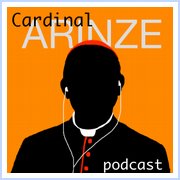Wednesday, April 06, 2005
The camerlengo
Apr. 05 (CWNews.com) - With the death of a Roman Pontiff, the spotlight quickly fastens upon the camerlengo : the holder of an office that will lapse back into obscurity upon the election of a new Pope.
Appointed by the Pope, the camerlengo ordinarily holds another office in the Roman Curia. As camerlengo he has virtually no responsibilities while the Pope is alive. When the Pope dies, and the leaders of the Roman Curia are relieved of their offices, the work of the camerlengo begins.
Until recently only the most dedicated Vatican-watchers could have identified the current camerlengo, Cardinal Eduardo Martinez Somalo, despite the fact that he has held the post since April 1993. The Spanish cardinal was known to the world primarily as prefect of the Congregation for Religious Life. The 78-year-old prelate is a respected veteran of Vatican affairs, having served in the Holy See's diplomatic corps and the Roman Curia for more than 30 years.
The office of camerlengo can be traced back to the 11th century, when the camera thesauraria--- treasure chamber-- was the office handling financial affairs for the Holy See. The head of that office was the camerlengo, or chamberlain. By the 15th century it had become mandatory that the camerlengo should be a cardinal.
The scope of the office has changed significantly over the centuries, but the camerlengo has always been involved with the handling of practical, temporal affairs for the Holy See-- with finances and administration rather than spiritual and doctrinal affairs. The current duties of the camerlengo were set forth by Pope Paul VI in his apostolic constitution Regimini Ecclesiae Universae in 1967 and updated by John Paul II in Pastor Bonus of 1988 and Universi Dominici Gregis of 1996. Essentially, the camerlengo supervises the temporal administration of the Vatican during the interregnum between Popes.
As caretaker the Holy See during the sede vacante period, the camerlengo has the responsibility formally to certify the death of the Pope; to seal off the papal apartments; to preside at prayer services for the deceased Pope and supervise his burial; to summon the world's cardinals to Rome; and-- together with 3 other prelates elected by the congregation of cardinals at their first meeting-- to handle the day-to-day management of Vatican affairs. He has the primary responsibility for preparing the conclave-- including, in modern times, the task of sweeping the Sistine Chapel to ensure that there are no electronic devices in place to eavesdrop on the cardinals' deliberations. The camerlengo continues with these management tasks through the election of the new Pope, at which time his importance quickly diminishes.
Appointed by the Pope, the camerlengo ordinarily holds another office in the Roman Curia. As camerlengo he has virtually no responsibilities while the Pope is alive. When the Pope dies, and the leaders of the Roman Curia are relieved of their offices, the work of the camerlengo begins.
Until recently only the most dedicated Vatican-watchers could have identified the current camerlengo, Cardinal Eduardo Martinez Somalo, despite the fact that he has held the post since April 1993. The Spanish cardinal was known to the world primarily as prefect of the Congregation for Religious Life. The 78-year-old prelate is a respected veteran of Vatican affairs, having served in the Holy See's diplomatic corps and the Roman Curia for more than 30 years.
The office of camerlengo can be traced back to the 11th century, when the camera thesauraria--- treasure chamber-- was the office handling financial affairs for the Holy See. The head of that office was the camerlengo, or chamberlain. By the 15th century it had become mandatory that the camerlengo should be a cardinal.
The scope of the office has changed significantly over the centuries, but the camerlengo has always been involved with the handling of practical, temporal affairs for the Holy See-- with finances and administration rather than spiritual and doctrinal affairs. The current duties of the camerlengo were set forth by Pope Paul VI in his apostolic constitution Regimini Ecclesiae Universae in 1967 and updated by John Paul II in Pastor Bonus of 1988 and Universi Dominici Gregis of 1996. Essentially, the camerlengo supervises the temporal administration of the Vatican during the interregnum between Popes.
As caretaker the Holy See during the sede vacante period, the camerlengo has the responsibility formally to certify the death of the Pope; to seal off the papal apartments; to preside at prayer services for the deceased Pope and supervise his burial; to summon the world's cardinals to Rome; and-- together with 3 other prelates elected by the congregation of cardinals at their first meeting-- to handle the day-to-day management of Vatican affairs. He has the primary responsibility for preparing the conclave-- including, in modern times, the task of sweeping the Sistine Chapel to ensure that there are no electronic devices in place to eavesdrop on the cardinals' deliberations. The camerlengo continues with these management tasks through the election of the new Pope, at which time his importance quickly diminishes.



